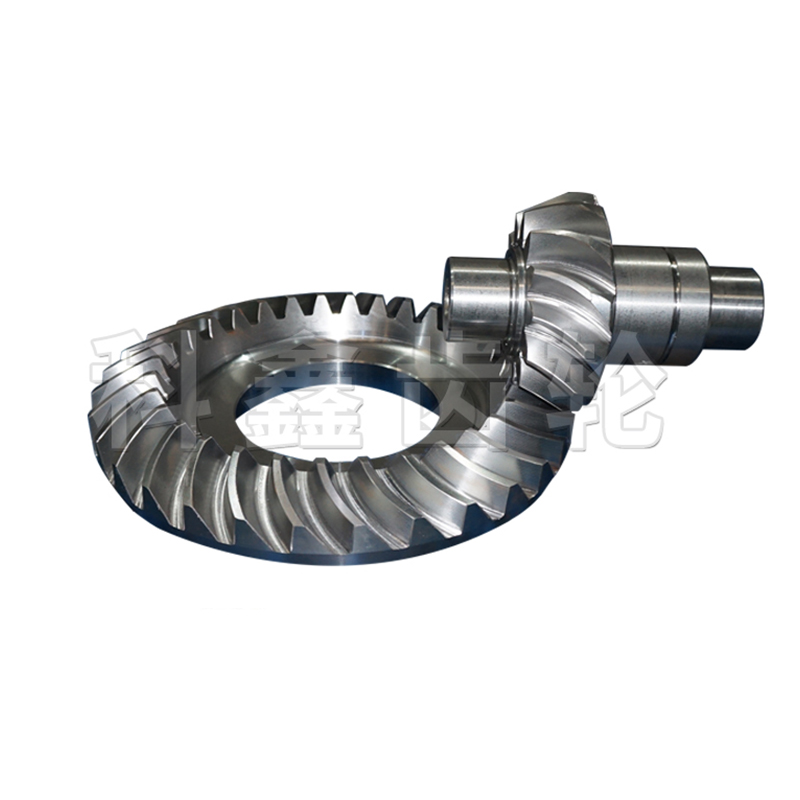Significance of Helix Angle in Spiral Bevel Gears
In the realm of mechanical engineering, precision and efficiency reign supreme. When it comes to transmitting power between intersecting shafts, spiral bevel gears play a pivotal role. Among the myriad factors dictating their performance, the helix angle stands out as a critical parameter. In this comprehensive guide, we delve deep into the significance of the helix angle in spiral bevel gears.

Spiral bevel gears are a type of bevel gear characterized by their curved teeth. Unlike straight bevel gears, which have teeth cut straight across the gear's face, spiral bevel gears feature teeth that are curved in a helical pattern. This design enables smoother engagement and reduces noise and vibration, making them ideal for applications requiring precision and quiet operation.
The Helix Angle: Defining Efficiency and Performance
What is the Helix Angle?
The helix angle refers to the angle formed between the tooth's helix and the gear's axis. It determines the spiral's inclination relative to the gear's rotational axis. This angle plays a crucial role in defining the gear's performance characteristics, including efficiency, load-bearing capacity, and smoothness of operation.
Significance of the Helix Angle
1. Efficiency Enhancement
The helix angle directly influences the gear's efficiency by affecting the contact pattern between the teeth during operation. A carefully selected helix angle ensures uniform tooth engagement, minimizing stress concentration and power loss due to friction. As a result, gears with optimal helix angles exhibit higher efficiency and lower energy consumption.
2. Load Distribution
Optimal helix angles facilitate even distribution of loads across the gear teeth. By spreading the load over a larger contact area, the risk of premature wear and tooth failure is mitigated, enhancing the gear's longevity and reliability. Moreover, uniform load distribution contributes to smoother operation and reduced noise generation, essential for applications demanding precision and quietness.
3. Noise and Vibration Reduction
The helix angle plays a crucial role in dampening noise and vibration in spiral bevel gears. By introducing a helical component to the gear teeth, the engagement sequence becomes more gradual, minimizing impact forces and harmonic vibrations. Consequently, gears with appropriate helix angles operate with reduced noise levels and enhanced smoothness, making them indispensable for applications where noise pollution is a concern.
Factors Influencing Optimal Helix Angle Selection
Gear Application
The choice of helix angle is heavily influenced by the gear's intended application. High-speed, high-torque applications may require steeper helix angles to ensure efficient power transmission and load-bearing capacity. Conversely, low-speed, precision applications may benefit from shallower helix angles to prioritize smoothness and quiet operation.
Gear Geometry and Manufacturing Constraints
The design of the gear teeth and manufacturing limitations also dictate the selection of the helix angle. Factors such as tooth size, module, and manufacturing processes impose constraints on the feasible range of helix angles. Engineers must strike a balance between optimal performance and practical manufacturability when determining the helix angle for a given application.
Conclusion
In the intricate world of mechanical engineering, every design parameter carries profound significance. The helix angle in spiral bevel gears is no exception. From enhancing efficiency and load distribution to reducing noise and vibration, the helix angle plays a pivotal role in defining the performance and reliability of these critical components. By understanding and optimizing the helix angle, engineers can unlock the full potential of spiral bevel gears across a myriad of industrial applications.
评论
发表评论